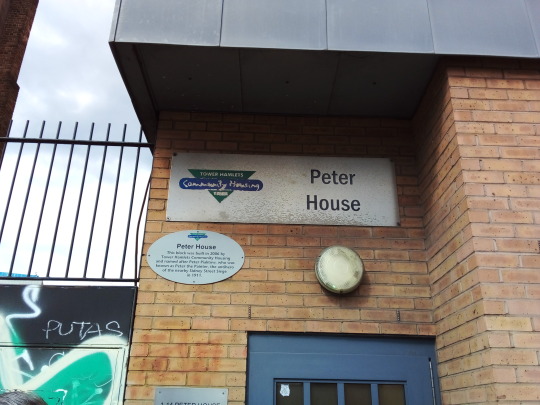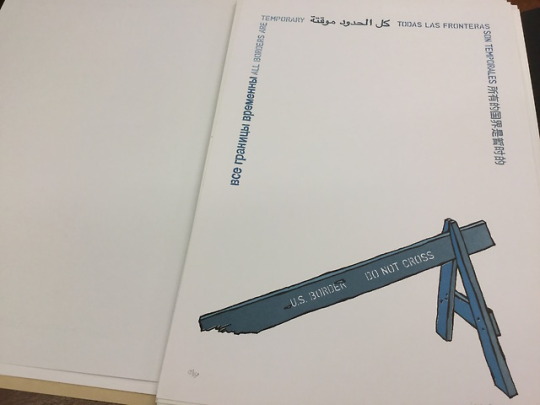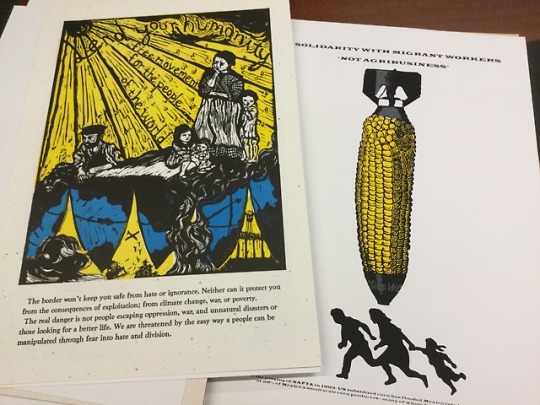#ImmigrantHeritage
Text
From Jack the Ripper to Sheikh Abdullah
By Faisul Yaseen
Passing by the narrow alleys of East London on a sunny Tuesday afternoon, I was awestruck by how London’s Whitechapel district remembers its anti-heroes.

A walk by the colourful graffiti walls in the most unlikely of London’s landmarks, the East End, is a lesson in history.
Veteran journalist of the BBC fame, Andrew Whitehead, gave me and seven other journalists from India, Pakistan, and Sri Lanka a walking tour of the East End, situated east of the Roman and medieval walls of the City of London and north of the River Thames.
During the walk, he informed us about the legacy of the area that has over the past 300 years been home to Huguenots, Jews, and Bengalis and seen cultural as well as visual transformation beyond imagination.
It was fascinating to find out how anti-heroes and anarchists had over the years developed more than a cult following in the East End.
Entering a small by-lane near the Whitechapel Gallery, I was surprised to see two of my favourites, Leo Tolstoy and Noam Chomsky on a black-and-white billboard of 36 anarchist figures hanging from a red-coloured wall.

Seeing the colourful graffiti and anarchist slogans shook me out of oblivion that despite better development and better policing compared to South Asia, there were people in London too who resent the state, the police, and the status quo.
The slogans of anarchism ‘Kill the cop, like kill them like sex f**k, like kill them f**k, just FYI. Boris would get it though’, ‘I don’t look sexy for your p**is’, ‘Not queer as in gay, queer as in f**k the Police’, ‘No Gods, no masters. All cops are bas****s.’ ‘Two-faced hypocritical, leeching, pancing, selfish, lowlife, scambags,’ ‘Hate cops, love donk’, ‘Tranquility, black magic, white angel, dead man walking, and ‘Pompey till I die’ clearly illustrated that these people want liberation from the “oppressive systems” of control from the state, religion, capitalism, racism, sexism, ableism, and speciesism.

Taking a stroll inside the Freedom Bookshop and Publishing House, I found several books about anti-heroes and anarchists like ‘The Slow Burning Fuse: The Lost History of the British Anarchists’ and realised how the legend is woven in London’s literary landscape.
The graffiti outside the bookshop was so eye-pleasing that my fellow journalist and friend from India, Aman Sharma could not resist taking a photograph in front of it. I reckon it can be a good profile picture for his social media accounts.

During the walk, we took a break for lunch and Sharma, two other fellow journalists from Pakistan Riaz-ul-Haq and Muhammad Iqbal Baloch along with me grabbed a lunch at East End’s bustling city centre. The aroma of fresh coffee along with the Indian, Chinese, Central Asian, and continental cuisine pointed at the rich diversity East End has to offer.
The openness of the people indulging in discussions over lunch exemplified why the anti-hero had become a legend in this area.
Returning to join the walk after lunch, I wondered how my native place Kashmir, a conflict-ridden region in the Himalayas, remembers its anti-heroes.
Sheikh Mohammad Abdullah, the former Prime Minister of Jammu and Kashmir, has a legendary status in the region for the radical land reforms of providing “land to the tiller”.
However, he is also held responsible for the sufferings of the people of Kashmir for the past 74 years as he helped Hindu but secular India in the accession of Muslim Kashmir following the division of the Indian subcontinent in 1947.
Pro-independence National Liberation Front founder Muhammad Maqbool Bhat, who was hanged to death on 11 February 1984 by the Indian government for carrying out multiple militant attacks is another anti-hero.
Kashmir’s most prominent secessionist leader Syed Ali Geelani, and militant leaders Ashfaq Majeed, Syed Salahuddin, Burhan Wani, and Zakir Musa are all anti-heroes in the region struggling for peace and stability.
Prime Minister of India, Narendra Modi has taken the status of an anti-hero to a new high.
Accused of allowing the state machinery to facilitate the killings of hundreds of Muslim men and the rape of Muslim women in the Gujarat riots of 2002, Modi has surprisingly risen to a stature where millions of Indian Hindus see him as a god.
Modi’s rise may be because people who shine as morally pure and upright no longer ring true to the masses, probably because we are not used to seeing such people around us.
Pop culture too has glorified the anti-heroes and anarchists, changing our attitude towards them.
Author Melissa De La Cruz writes, “We’re the villains you root for in the story.”
From listening to the stories of classical literary anti-hero Robinhood in childhood to watching my favourite TV show Mad Men’s main character Don Draper stealing the identity of his friend who died in the war in Korea, I have always rooted for the anti-hero, caring little about the moral compass.
But don’t all of us feel like that? Don’t we all like the Hulk, the Wolverine, and the Batman? Wasn’t Adam perhaps the first anti-hero? Didn’t he disobey God and instead pay heed to Eve for having the “forbidden fruit”? Don’t we like John Milton’s ‘Paradise Lost’ for its anti-hero, who was once an angel of light? Don’t people still lay flower wreaths at the altar of Julius Caesar? We may not like George Orwell’s Big Brother but isn’t he the anti-hero for ensuring order in society?
In today’s East End, a synagogue has been converted into a mosque as the Bangladeshi population has replaced the Jews who have migrated from the area indicating how Britain welcomes the immigrants. However, the image of a Muslim post-9/11 world is perhaps the new anti-hero.

In today’s China, the Communist Party of China is the anti-hero for taking millions of impoverished people out of poverty over the past three decades. In Russia, Putin is the anti-hero for standing up against NATO’s “expansion”. The US is the anti-hero for standing up for the West while engaging in relentless wars.
Walking past ‘Jack the Chipper’, a fish and chip shop, Whitehead informed us that the shop was named after anti-hero ‘Jack the Ripper’, an unidentified serial killer active around 1888 in the city’s Whitechapel district.
The shop owner did not change its name despite public backlash and criticism. He instead offered a 50 percent discount to women as 'Jack the Ripper' had been involved in the brutal murders of many women.
We concluded our walk at the two tower blocks in Sidney Street – Peter House and Painter House. In September 2008, Tower Hamlets London Borough Council named the two tower blocks after ‘Peter the Painter’, evoking protest by a local councillor and the Metropolitan Police Federation saying that the killer should not be recognised.

‘Peter the Painter’ or ‘Peter Piaktow’, whose actual name was Janis Zhaklis, was a member of the Latvian anarchist gang in the early 20th century. He escaped to Australia after the Sidney Street Siege in 1911 in which two of his three gang members were killed.
As we headed to our hotel, I realised how East End, despite criticism, keeps its anti-heroes alive and how anarchism is a way of life in the area. Some things live on as do ideas.
#EastEndLegends#AnarchistSpirit#AntiHeroTributes#LondonGraffiti#CulturalResistance#LegacyOfRebellion#DiverseNarratives#UrbanExploration#RevolutionaryIcons#SocialCommentary#HistoricalPerspectives#EastEndDiversity#LiteraryAnarchism#ImmigrantHeritage#ModernAntiHeroes#ControversialFigures#SymbolsofDefiance#UrbanSubcultures#LegacyOfProtest#LivingHistory
0 notes
Text
Best American Cities For Immigrants | Best Place | Travel Bug

The United States is home to many immigrants from around the world who have come to pursue a better life. As such, there are many cities in the United States that are ideal for immigrants, offering a wealth of opportunities and resources
#AmericanDream#ImmigrantLife#Diversity#ImmigrantHeritage#AmericanMeltingPot#ImmigrantSuccess#ImmigrantRights#ImmigrationReform#ImmigrantsWelcome#ImmigrationAdvocacy#ImmigrantStories#ImmigrationJustice#ImmigrationEquality#DreamersWelcome
0 notes
Photo




June is Immigrant Heritage Month.
This Artists’ Book speaks loudly for the current political climate with strong messages. This month, we want to share immigrant stories, and celebrate immigrant heritage.
Migration now : a print portfolio of handmade prints addressing migrant issues
Justseeds and CultureStrike.
Justseeds Artists' Cooperative.
[Pittsburgh, Penn.] ; Justseeds Artists' Cooperative, 2012.
37 prints : col. ; housed in portfolio 46 x 33 cm.
English
Limited edition of 140 portfolios.
Each print has signature of the artist.
#immigrantheritagemonth#immigrantheritage#immigrants#artist's book#fineartslibrary#harvardfineartslibrary#harvardfineartslib#Harvard#harvard library
82 notes
·
View notes